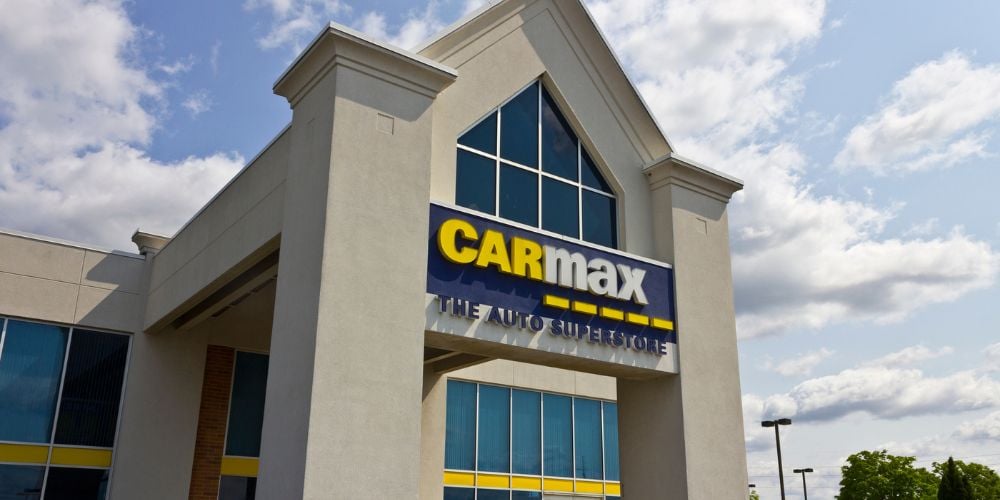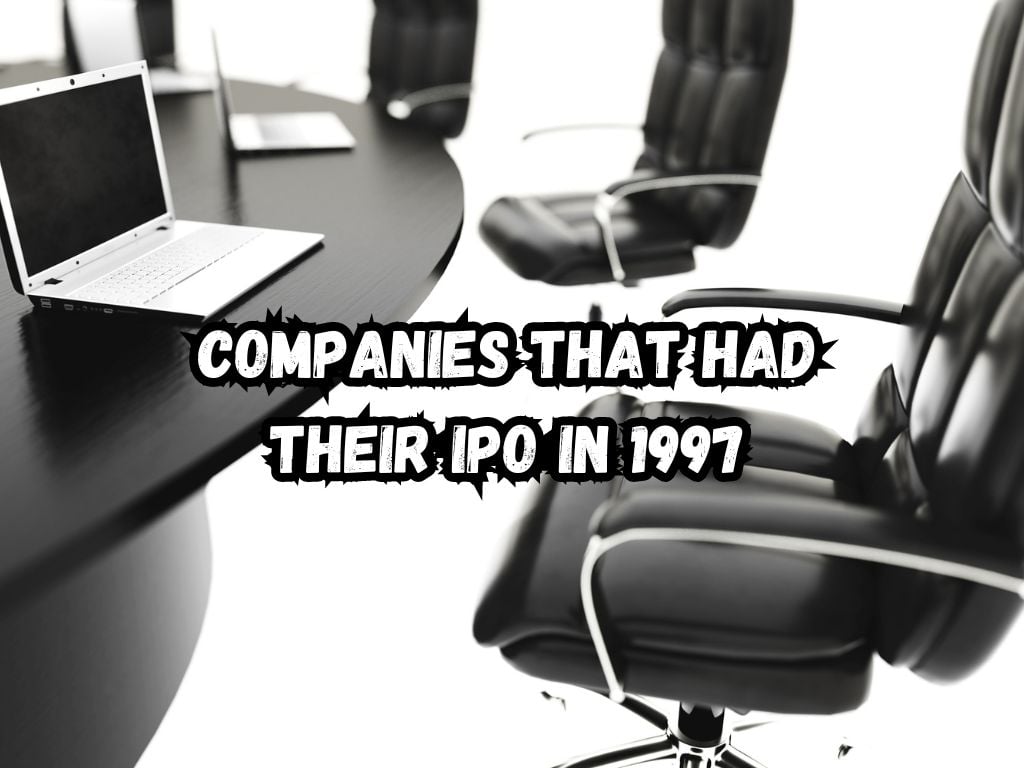The year 1997 was a significant one for the stock trading world. On Wall Street, there was an air of anticipation as a myriad of innovative businesses were on the cusp of making their bold entries through initial public offerings (IPOs).
The subsequent years witnessed the trajectories of these companies, some skyrocketing to success while others somewhat dwindled.
In this piece, we shall venture to companies that had their IPO in 1997, the rises and falls, and various corporate maneuvers of these distinctive companies.
Companies That Had Their IPO in 1997
From online retail titans to pioneering technology firms, 1997 was an eclectic mix of IPOs. Several key players made their debut in this year: Amazon, CarMax, BEA Systems, Gildan, and Rambus.
Each promised unique, groundbreaking changes – propelling online commerce forward, revamping the automobile retail landscape, reshaping technology development, evolving apparel industries, and transforming semiconductor technology. Now let’s take a deep dive into the adventures they embarked on post their IPOs.

In-Depth Analysis
Amazon
Regarded today as a tech behemoth, Amazon started its humble journey in 1994 as an online marketplace for books.
Fast forward to 1997, and Amazon successfully launched its IPO, priced modestly at $18 per share, attracting an array of investors intrigued by the company’s potential to diversify and scale beyond just an online bookstore.
Currently, Amazon stands as a leading multinational conglomerate, with its shares trading for thousands of dollars, pegging them with one of the highest market caps in history.
CarMax
CarMax emerged on the horizon in 1997, lugged with a simple yet forward-thinking concept – to streamline and demystify the process of buying used cars.
CarMax effectively managed to breathe fresh life into an immensely traditional sector, hiring and training dedicated employees who placed honesty, transparency, and customer service above all.
A few decades later, and CarMax has etched itself as the largest used-car retailer in America, with an unerring commitment to their founding ethos.
BEA Systems
Tech firm, BEA Systems, debuted in 1995 and came at a time when middleware software was gaining increased traction. Locking their targets on this sector, BEA Systems had a successful IPO in 1997.
Their strategic decision paid off handsomely when, ten years later, Oracle made the move to acquire BEA Systems. This purchase wholesomely enhanced Oracle’s software portfolio, establishing them as an even more formidable enterprise software competitor.
Gildan
A clothing brand from Canada, Gildan, made an exciting entrance with its IPO in 1997. Starting as a penny stock trading at just a few dollars per share, Gildan prided itself on its range of quality apparel.
Proving that every penny counts, Gildan has continuously worked on its trajectory to expand its lineup, reaching closets worldwide. Fast forward to today, and Gildan’s shares exhibit a commendable increase demonstrating their appreciable journey and growth.
Rambus
Rambus was a notable player in the rapidly growing semiconductor industry. The potential reflected by their 1997 IPO was momentous. However, after a tumultuous sequence of lawsuits, the company undertook several strategic shifts.
The Impact of The Class of ’97
Impact of Amazon
When Amazon made its debut, few could predict the magnitude of change it would bring. It not only scaled from an online bookstore to a retail giant, but its model also fundamentally transformed e-commerce.
Revolutionizing E-commerce
Amazon’s relentless focus on customer satisfaction and innovation led to new standards in e-commerce. Their 1-Click shopping, personalized recommendations, and robust customer reviews system changed the way people shop.
Ventures Beyond Retail
The company didn’t limit itself to retail; it also disrupted the technology space. Their cloud service, Amazon Web Services (AWS), leads the global market, underlining Amazon’s wider influence.

Impact of CarMax
CarMax reshaped the used-car industry, offering a strategy focused on customer trust.
A Transparent Approach
CarMax’s no-haggle pricing policy and meticulous quality checks provided a transparent, reliable car-buying experience. They proved that trust and transparency catalyze growth in a traditionally opaque industry.
Impact of Gildan
Gildan’s journey demonstrated how a company could achieve exponential growth with a diversified lineup.
Diversifying Product Range
It evolved from making basic t-shirts to a broad range of apparel, proving that an ever-expanding product lineup fuels success in the global apparel industry.
Impact of Tech Firms
BEA Systems and Rambus influenced the tech space with their unique offerings.
BEA Systems: Middleware Software Innovation
BEA Systems’ middleware software solutions filled a much-needed gap, contributing greatly to the software industry. Its later acquisition by Oracle reinforced its value in the sector.
Rambus: Pioneers in Semiconductor Technology
Rambus faced several challenges, but its continual innovation in the semiconductor industry reaffirmed its relevance. Its subsequent focus on technology licenses showcases strategic adaptability.
Key Takeaways
The success stories from the class of ’97 are quite awe-inspiring. Amazon and CarMax, in particular, stand out as the clear winners. Their consistent trajectory of growth and adaptability to market conditions have far-reaching effects that have solidified their market dominance.
BEA Systems’ acquisition by Oracle stood as a testament to the strategic value its technology held. Gildan has demonstrated steady growth, underlining the impact of a diverse product lineup on international market penetration.
Rambus, despite facing substantial challenges, managed to carve its niche in the tech industry.
However, not all the lessons gleaned are about success. Each of the companies encountered their distinct highs and lows, some with intense market competition, while others faced internal challenges.
No journey pursued its path linearly, and the key lesson here is that an IPO is merely a step in a company’s journey. Its true measure rests in the ability to sustain, transform, and innovate over consistent periods that the class of ’97 stands testament to.
FAQs
What was the biggest IPO in 1997?
Amazon’s IPO takes the crown for being the most significant in 1997, and its exponential growth since then underscores this fact.
Which company that had an IPO in 1997 has performed the best since?
Amazon has undeniably outshone in performance with its pioneering initiatives, consistent growth, and evolving market dominance.
How have the companies that had their IPOs in 1997 shaped the current market?
Each of the companies made substantial contributions to their respective sectors. From molding the course of e-commerce and shaping modern car retailing to influencing software development, apparel production, and semiconductor technology, they’ve left indelible imprints on today’s market.
Conclusion
It’s clear that the class of ’97 IPO startup companies serves as an intriguing study in business dynamics, market trends, and strategic innovation.
While the collective dazzle of successes of companies like Amazon and CarMax strikes us, the other featured companies also unleash a plethora of vital lessons.
Every decision made, every path taken, each company’s journey since its IPO, echoes compelling narratives about success, challenges, resilience, and innovation that holds profound effects on the global market today.


 Tags:
Tags:










